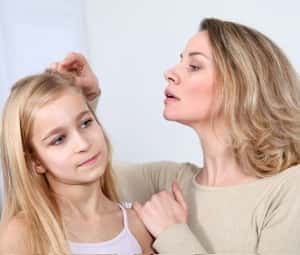
The very word makes your skin crawl. Even though dermatologists reassure us that lice do not pose a serious health risk, dealing with an infestation can be traumatic.
Hygiene has nothing to do with lice, but parents still feel stigmatized when a child is sent home from school. The ensuing rounds of treatment often become frustrating.
Lice have developed resistance to many of the common chemicals used to kill them. Even the powerful insecticide lindane may not eradicate the creepy-crawlies (Clinical Microbiology and Infection, April, 2012).
There are also concerns about lindane toxicity. Public Citizen, a patient advocacy organization, points out that lindane side effects include skin irritation, headache, dizziness, seizures and blood disorders.
A relatively new prescription lice treatment, Ulesfia, appears effective and safe. Unfortunately, it is pricey. One mother wrote:
“My pediatrician just prescribed Ulesfia for my daughter, who’s been battling lice for months. She has long hair and the cost is $600! I don’t know how they expect anyone to be able to afford this.”
Ulesfia contains benzyl alcohol and works by suffocating lice. Another, less expensive approach that also works by suffocation is old-fashioned amber Listerine. It contains herbal oils in an ethyl alcohol base. One young woman wrote:
“I got lice while working at a summer camp. I have super-long thick curly hair, so the infestation was bad. I used Listerine on my scalp for two hours. Then I applied Denorex for 30 minutes, washed it out and used a coconut conditioner.
“The dead lice were falling out of my hair. It was disgusting but I’m so glad they are out! I am way too old for this.”
A mother reported:
“My child picked up lice last year from his elementary school. I had never come across them before so I freaked out. I ran to the drug store and bought over-the-counter lice shampoo. I tried it twice and both attempts were not even remotely successful.
“Then I found the mention of amber Listerine. While combing my son’s hair I removed a louse and put it in a bottle cap with some Listerine. Within a few minutes it was deader than a doornail. That convinced me to soak my son’s head with Listerine. He put a shower cap on for two hours and I combed out lice and nits. We repeated this process several nights and it was successful.”
Listerine is not the only home remedy people have used to smother lice. Cetaphil cleanser (not the moisturizer) has also been used and even written about in the medical literature (Pediatrics, Sept. 2004). A parent wrote:
“My kids have brought lice home twice in the past year. After RID did not work, we used the Cetaphil method recommended by our pediatrician. It worked well both times.”
Cetaphil contains cetyl alcohol. It is applied to the hair and then a blow dryer is used to create a hard shell. It is left on overnight and washed out in the morning, along with the dead lice.
Home remedies are not FDA approved. But they are a lot more affordable and judging from the reports on our website, surprisingly effective. To read more about lice remedies, visit www.PeoplesPharmacy.com.

